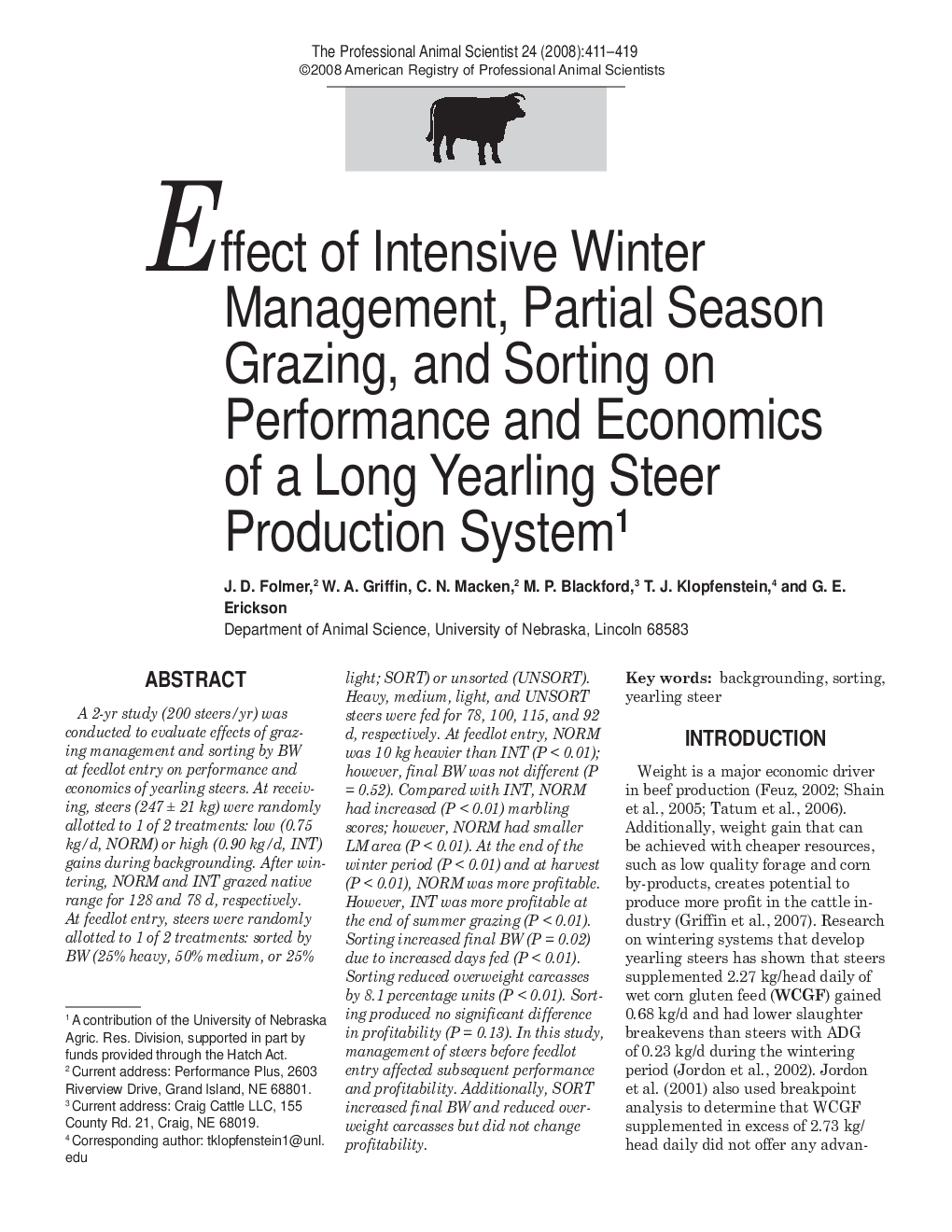| Article ID | Journal | Published Year | Pages | File Type |
|---|---|---|---|---|
| 2454265 | The Professional Animal Scientist | 2008 | 9 Pages |
Abstract
A 2-yr study (200 steers/yr) was conducted to evaluate effects of grazing management and sorting by BW at feedlot entry on performance and economics of yearling steers. At receiving, steers (247 ± 21 kg) were randomly allotted to 1 of 2 treatments: low (0.75 kg/d, NORM) or high (0.90 kg/d, INT) gains during backgrounding. After wintering, NORM and INT grazed native range for 128 and 78 d, respectively. At feedlot entry, steers were randomly allotted to 1 of 2 treatments: sorted by BW (25% heavy, 50% medium, or 25% light; SORT) or unsorted (UNSORT). Heavy, medium, light, and UNSORT steers were fed for 78, 100, 115, and 92 d, respectively. At feedlot entry, NORM was 10 kg heavier than INT (P < 0.01); however, final BW was not different (P = 0.52). Compared with INT, NORM had increased (P < 0.01) marbling scores; however, NORM had smaller LM area (P < 0.01). At the end of the winter period (P < 0.01) and at harvest (P < 0.01), NORM was more profitable. However, INT was more profitable at the end of summer grazing (P < 0.01). Sorting increased final BW (P = 0.02) due to increased days fed (P < 0.01). Sorting reduced overweight carcasses by 8.1 percentage units (P < 0.01). Sorting produced no significant difference in profitability (P = 0.13). In this study, management of steers before feedlot entry affected subsequent performance and profitability. Additionally, SORT increased final BW and reduced overweight carcasses but did not change profitability.
Keywords
Related Topics
Life Sciences
Agricultural and Biological Sciences
Animal Science and Zoology
Authors
J.D. Folmer, C.N. Macken, M.P. Blackford, W.A. Griffin, T.J. Klopfenstein, G.E. Erickson,
